
When you hear the term “press brake,” a multitude of images might flood your mind. From a simplistic bending tool to an intricate mechanical marvel, the press brake is an indispensable piece of machinery in the world of metal fabrication. It’s a cornerstone in many manufacturing processes, but how exactly does it stand out from the crowd of other tools?
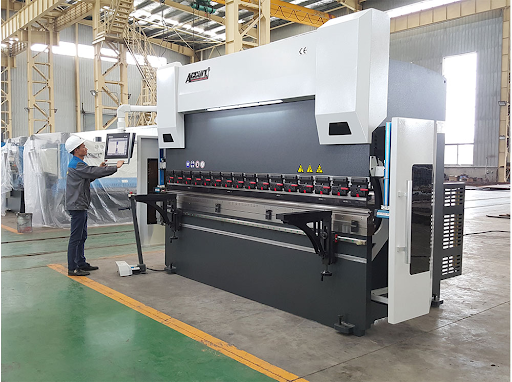
What Exactly is a Press Brake?
A press brake, in its essence, is a machine tool designed specifically for bending sheet and plate material, most commonly sheet metal. The press brake achieves this by clamping the material between a matching punch and die set, enabling precise bends.
Main Components of a Press Brake:
Backgauge – Used to position the material accurately.
Die and Punch – Tools that work in conjunction to create bends.
Bed and Ram – Two main parts of the machine where the bending process occurs.
Control Panel – The interface where operators input desired measurements and controls.
How Does a Press Brake Work?
At its core, a press brake uses force to bend material. This force is applied through the ram, which pushes the material into the die. With the right combination of punch and die, along with accurate force application, the material bends to the desired angle.
Step-by-step Process of Using a Press Brake:
Setup: Selection of the right punch and die based on the material and desired bend.
Positioning: The material is placed between the punch and die.
Activation: The ram is activated, forcing the material into the die.
Bending: The material conforms to the shape of the die, achieving the desired bend.
Retraction: The ram is retracted, and the newly bent material is removed.
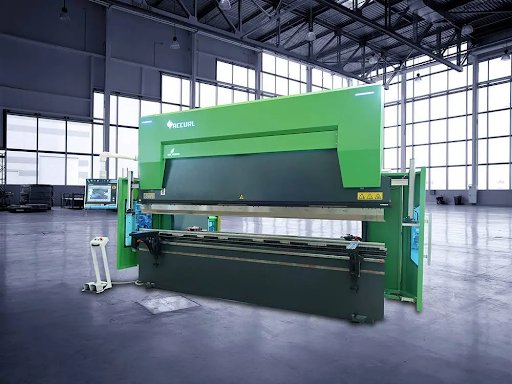
What Distinguishes a Press Brake from Other Bending Tools?
While there are numerous bending tools in the market, the press brake boasts a unique set of features. Its efficiency, versatility, and precision make it stand out.
Unique Features of a Press Brake:
Precision: Offers high accuracy and repeatability.
Versatility: Capable of bending a variety of materials and thicknesses.
Speed: Modern press brakes can operate at impressive speeds, increasing production rates.
What Makes a Press Brake Unique in Material Handling?
Press brakes are not just about bending metal; they excel in handling a diverse range of materials. From aluminum to high-strength steel, the press brake’s capability is vast. However, this comes with certain limitations, which are often dictated by the type of press brake and the tooling used.
How Does a Press Brake Ensure Accuracy and Precision?
The brilliance of press brakes lies in their advanced technology. Modern press brakes come equipped with CNC (Computer Numerical Control) systems, ensuring that each bend is accurate. Furthermore, the integration of lasers and other advanced measuring tools further enhances precision.
What Are the Types of Press Brakes?
Press brakes can be broadly classified based on their mechanism of force application.
Mechanical Press Brake Machines: Rely on a mechanical flywheel to store and transfer energy.
Hydraulic Press Brake Machines: Use hydraulic fluid to transfer and apply force.
Pneumatic Press Brake Machines: Operate using air pressure.
Servo-Electric Press Brake Machines: Utilize a servo motor to drive the ram.
What Are the Key Features to Look for in a Press Brake?
When investing in a press brake, several features can dictate the machine’s performance and versatility.
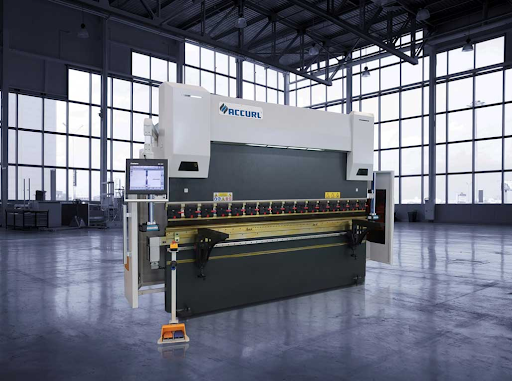
Factors to consider:
Bending Force: Determines the machine’s capability to handle thick materials.
Bending Length: Defines the maximum length of material the machine can bend.
Accuracy: Precision is paramount in metal fabrication.
Safety Features: Essential to protect operators from potential hazards.
Ease of Operation: Modern interfaces can make the process more intuitive.
What Is the Importance of Press Brake Tooling?
Tooling is the heart of the press brake operation. The combination of punch and die determines the angle, radius, and shape of the bend. Different tooling options can significantly impact the final product, offering varied shapes and bending capabilities.
Are There Specialized Tooling Sets for Different Materials?
Indeed, specific materials demand specialized tooling. For instance, bending high-strength steel might require different tooling than aluminum to ensure precision and prevent material damage.
How Does Press Brake Compare in Terms of Safety?
Safety is paramount in any industrial setting, especially when dealing with powerful machinery like press brakes. Compared to other tools, press brakes, when operated correctly and with the right precautions, can be incredibly safe. However, the potential risks associated with them can be severe, emphasizing the need for proper safety protocols.
What Are Essential Safety Protocols When Using a Press Brake?
The safety of operators and those around the machine should never be compromised. Here are some fundamental safety guidelines:
Proper Training: Ensure that only trained personnel operate the press brake.
Use of Protective Gear: Always wear safety glasses, gloves, and steel-toed boots.
Regular Maintenance: Ensure the machine is routinely checked and maintained.
Safety Guards: Use safety guards and light curtains to prevent accidental hand or finger injuries.
Stay Alert: Never operate the machine when fatigued or distracted.
Are There Limitations to What a Press Brake Can Achieve?
Like any tool, press brakes come with their own set of limitations. While they excel in precision bending, certain factors can limit their capabilities.
What Factors Affect the Bending Capacity of a Press Brake?
The bending capacity of a press brake isn’t solely about force; several aspects play a role:
Machine Power: The overall power of the machine determines the thickness and type of materials it can handle.
Tooling: The choice of punch and die can either enhance or limit the machine’s bending capabilities.
Material Properties: Some materials, like high-strength steel, can be more challenging to bend.
What are the Main Industries Utilizing Press Brakes?
Press brakes are not confined to one industry. Their versatility and precision make them valuable assets in multiple sectors.
Industries using press brakes include:
Aerospace: For crafting intricate parts of aircraft.
Automotive: In the making of vehicle parts and panels.
Construction: For creating beams, frames, and other structural elements.
Manufacturing: In the fabrication of various products and components.
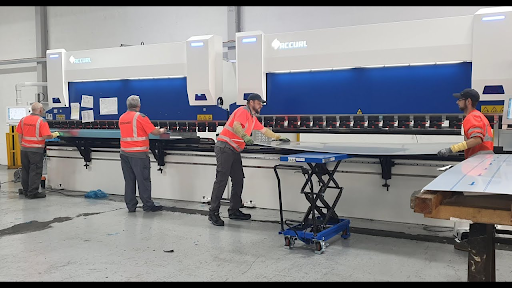
What Are Common Mistakes to Avoid When Using a Press Brake?
Operational mistakes can compromise the quality of the final product and even pose safety risks.
Common errors to watch out for:
Incorrect Tooling Selection: Can lead to imprecise bends or material damage.
Overloading the Machine: Exceeding the machine’s capacity can lead to wear and potential breakdowns.
Ignoring Maintenance: Neglecting regular checks can result in decreased machine efficiency and safety hazards.
Bypassing Safety Protocols: Skipping safety measures increases the risk of accidents.
How to Choose the Right Press Brake for Your Needs?
Choosing the right press brake involves understanding your needs, budget, and the tasks you aim to achieve.
Is Press Brake Operation Expensive?
While the initial investment for a press brake might be significant, its operation cost can vary based on several factors:
Type of Press Brake: Mechanical types might have different operating costs than hydraulic ones.
Maintenance and Repairs: Regular maintenance can prevent costly breakdowns.
Energy Consumption: Some modern press brakes are designed for energy efficiency.
What Are the Maintenance Requirements for Press Brakes?
To ensure longevity and optimal performance, regular maintenance is crucial.
Maintenance checks include:
Lubrication: Regular lubrication of moving parts to reduce wear.
Hydraulic System Checks: Ensuring no leaks and the hydraulic fluid is clean.
Tooling Inspection: Checking for wear and tear or any damage.
Safety Systems Test: Ensuring that safety guards and light curtains function correctly.
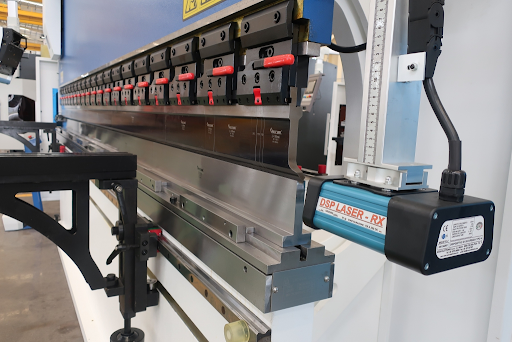
Alternatives to Press Brakes
While press brakes are essential for precision bending, other tools can be used for shaping and bending:
Roll Benders: Best for creating large-radius bends.
Swing Beam Shears: Useful for cutting rather than bending.
Rotary Benders: Ideal for creating small-radius bends.
Turret Punch Press: Used for punching holes in sheet metal.
Each tool has its pros and cons, with specific applications where they excel.
Conclusion
Press brakes, with their precision, versatility, and adaptability, have firmly established themselves as irreplaceable assets in numerous industries. Their unique features, coupled with the right tooling, can help achieve intricate bends that few other tools can replicate. Whether it’s aerospace, automotive, or construction, press brakes play a pivotal role in shaping the world around us. As with any machinery, understanding their capabilities, limitations, and safety protocols ensures that they continue to operate at peak efficiency, crafting products that stand the test of time.